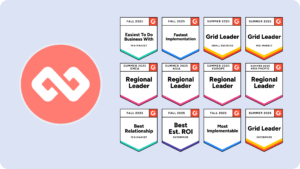Today, collaboration has become an essential element for success in the workplace. It allows teams to pool their knowledge, skills, and perspectives to achieve common goals and solve complex problems. However, not all collaboration is the same. In fact, there are five types of collaboration styles that teams can adopt, each with its benefits and drawbacks. In this article, we will explore these five styles, dive into their pros and cons, and help you identify the right collaboration style for your team. So, let’s get started!
Understanding the Benefits of Different Collaboration Styles
Collaboration styles can greatly impact the way teams work together and the outcomes they achieve. By understanding the benefits of each of the types of collaboration styles, you can better leverage them to enhance your team’s performance.
1. Cooperative Collaboration
The first collaboration style is cooperative collaboration, where team members openly share ideas and work together towards a common goal. This style fosters trust and mutual respect, creating an environment where everyone feels comfortable contributing. It encourages a sense of ownership and commitment, leading to higher levels of engagement and productivity.
Imagine a team working on a complex project. In a cooperative collaboration style, team members gather around a table, brainstorming ideas, and sharing their expertise. They build upon each other’s suggestions, creating a synergy that fuels creativity and innovation. As the team progresses, they develop a strong bond, supporting one another through challenges and celebrating their achievements together. This collaborative environment not only enhances the quality of their work but also boosts team morale and satisfaction.
Cooperative collaboration is a style that emphasizes teamwork and collective effort. It promotes trust and camaraderie within the team, creating a positive and supportive work environment. By fostering a sense of belonging and collective ownership, this style encourages team members to feel invested in the success of the project.
2. Competitive Collaboration
Next is competitive collaboration, where teams actively compete with one another to achieve the best results. This style can be highly motivating, as individuals strive to outperform their peers. It stimulates creativity and innovation, pushing team members to think outside the box and find unique solutions. However, it’s important to strike a balance with healthy competition, as excessive rivalry can lead to strained relationships and decreased collaboration.
Imagine a scenario where two teams are tasked with developing a new product. In a competitive collaboration style, each team works diligently to come up with the most innovative and marketable solution. The friendly competition drives them to explore new ideas, challenge assumptions, and push their limits. As a result, both teams deliver exceptional outcomes, showcasing their skills and expertise. This style not only fosters a spirit of excellence but also encourages continuous improvement and growth.
Competitive collaboration is a style that harnesses competition to drive motivation and excellence within the team. It encourages team members to push their boundaries and strive for innovative solutions. By fostering a results-driven mindset and a sense of accomplishment, this style can lead to high levels of productivity and achievement.
3. Directive Collaboration
The third style is directive collaboration, where a leader takes charge and directs team members’ efforts. This style is useful in situations where quick decisions need to be made or when a team lacks experience or expertise. The clear direction provided by the leader helps streamline processes and promotes efficiency. However, it’s essential to ensure that the directive approach doesn’t stifle creativity or hinder valuable contributions from team members.
Imagine a team working on a time-sensitive project with strict guidelines. In a directive collaboration style, a leader steps in to provide clear instructions and guidelines, ensuring that the team stays on track and meets deadlines. The leader’s expertise and decisive decision-making help the team navigate challenges and make progress efficiently. However, the leader must create an environment where team members feel comfortable sharing their ideas and concerns, ensuring that their perspectives are valued and considered.
Directive collaboration is a style that involves a leader providing clear guidance and direction to team members. It ensures quick decision-making and streamlined processes, making it effective in time-sensitive situations or when expertise is lacking.
4. Facilitative Collaboration
Another style is facilitative collaboration, where a designated facilitator guides the team’s discussions and decision-making processes. This style encourages open dialogue and ensures that everyone’s voice is heard. It helps prevent dominant personalities from overshadowing others and promotes a more inclusive and diverse approach. Facilitative collaboration fosters a supportive environment, where team members can learn from one another and grow both personally and professionally.
Imagine a team working on a complex problem that requires input from various stakeholders. In a facilitative collaboration style, a skilled facilitator leads the team through structured discussions, encouraging active participation from all members. The facilitator ensures that everyone’s ideas are heard and respected, creating a safe space for open and honest communication. This collaborative approach not only leads to better decision-making but also cultivates a culture of trust and collaboration within the team.
Facilitative collaboration is a style that promotes inclusivity and ensures diverse perspectives are heard. It involves a skilled facilitator guiding the team through constructive dialogue and effective decision-making. This style leads to better problem-solving through collective intelligence.
5. Delegative Collaboration
The final collaboration style is delegative collaboration, where team members are given the autonomy to work independently and make their own decisions. This style empowers individuals, allowing them to take ownership of their tasks and unleash their creativity. It encourages self-reliance and trust, as team members feel valued and empowered to contribute their unique perspectives. However, it’s crucial to establish clear boundaries and provide adequate support and guidance where needed to ensure successful outcomes.
Imagine a team working on a project that requires individual expertise and creativity. In a delegative collaboration style, team members are given the freedom to explore their ideas and execute their tasks independently. This autonomy fosters a sense of ownership and accountability, as each team member takes responsibility for their contributions. The team thrives on the diversity of perspectives and approaches, creating a rich tapestry of ideas and solutions.
Delegative collaboration is a style that empowers individuals and fosters creativity. It involves delegating tasks and responsibilities to team members, allowing them to take ownership and make autonomous decisions.
Now that we have explored the types of collaboration styles and their benefits, let’s delve into their pros and cons.
Exploring the Pros and Cons of Each Collaboration Style
Each collaboration style has its own advantages and disadvantages. It’s important to carefully consider these factors before adopting a specific style to ensure it aligns with your team’s goals and dynamics.
| Collaboration Type | Pros | Cons |
|---|---|---|
| Cooperative Collaboration | It encourages open communication and idea-sharing. Team members are more likely to feel comfortable expressing their thoughts and opinions, leading to a greater diversity of ideas and perspectives. | If diverse perspectives are not actively sought, there is a risk of groupthink, where everyone in the team agrees without critically evaluating alternatives. Reaching consensus can be time-consuming, especially if there are differing opinions that need to be addressed. In a collective-oriented environment, individual accountability may also be diluted, as the focus is on the team as a whole rather than individual contributions. |
| Competitive Collaboration | This style encourages creativity and innovative thinking. When team members are motivated to outperform each other, they are more likely to come up with unique and groundbreaking ideas. This can lead to breakthroughs and advancements in the project. | It may lead to strained relationships and unhealthy rivalries among team members. When the focus is on winning and losing, there is a risk of creating winners and losers, which can cause resentment and hinder collaboration. The competitive nature of this style may overshadow collaboration itself, as team members may be more focused on outperforming each other rather than working together and sharing knowledge. |
| Directive Collaboration | This style provides clarity and eliminates ambiguity. When team members know exactly what is expected of them and how to proceed, they can work more efficiently and effectively. This style is particularly useful when there is a need for quick decision-making, as the leader can provide clear instructions and guidance. | Likewise, it may discourage creativity and independent thinking, as team members are expected to follow the leader’s instructions without questioning. This can hinder the development of critical thinking skills within the team. Additionally, there is a risk of creating a dependency on the leader’s decision-making, which can limit the team’s ability to take initiative and make autonomous decisions. |
| Facilitative Collaboration | One of the advantages of facilitative collaboration is that it promotes inclusivity and encourages all team members to contribute their ideas and opinions. By ensuring that diverse perspectives are heard, this style can lead to more comprehensive and well-rounded solutions. The facilitator’s role in guiding the discussion and decision-making process can help the team stay focused and productive. | It may require a skilled facilitator for optimal outcomes, as they need to create an environment where everyone feels comfortable sharing their thoughts. Without a skilled facilitator, the discussions may not be as effective or productive. Facilitative collaboration can be time-consuming, as extended discussions may be necessary to reach a consensus. This can be a challenge when time is limited. |
| Delegative Collaboration | One of the advantages of delegative collaboration is that it encourages self-reliance and ownership of tasks. When team members are given the freedom to make decisions and take responsibility, they are more likely to be motivated and engaged. This style also allows diverse perspectives to flourish, as team members can bring their unique skills and expertise to the table. | However, there are also potential drawbacks to delegative collaboration. It may result in inconsistent quality if coordination is lacking. Without adequate coordination and communication, team members may interpret tasks differently or duplicate efforts. Delegative collaboration requires a high level of trust and confidence in team members. If trust is lacking, team members may feel unsupported or uncertain about their roles and responsibilities. There is also a risk that autonomy can become isolating, leading to a lack of coordination and synergy among team members. |

Finding the Right Collaboration Style for Your Team
Now that you are aware of the pros and cons of each collaboration style, it’s time to find the perfect fit for your team. Consider the following factors when making your decision:
- Team Goals: Analyze your team’s objectives and determine which collaboration style best aligns with achieving those goals. Are you looking to foster innovation, enhance productivity, or build strong relationships?
- Team Dynamics: Understand your team’s strengths, weaknesses, and communication patterns. Identify the style that complements their natural tendencies and addresses any potential challenges.
- Task Requirements: Evaluate the nature of the tasks your team undertakes. Some tasks may require more autonomy and independent thinking, while others may benefit from collective brainstorming or quick decision-making.
- Individual Preferences: Take into account the preferences and personalities of your team members. Ensure that the chosen collaboration style allows each individual to contribute their unique skills and perspectives.
- Mentoring: Mentoring can greatly enhance collaboration by providing guidance, support, and knowledge transfer. Consider integrating mentoring programs into your team’s collaboration efforts to maximize their effectiveness.
By carefully considering these factors, you can identify the types of collaboration styles that will best suit your team’s needs and enable them to reach their full potential.
Optimizing Group Dynamics with Collaboration Styles
Collaboration styles are not set in stone and can evolve as teams grow and learn. Optimizing group dynamics involves regularly assessing and fine-tuning the collaboration style to ensure it remains effective.
Encourage open feedback and create safe spaces for team members to express their thoughts and concerns. Emphasize the importance of active listening and respecting diverse viewpoints. Make adjustments as necessary to address any issues that may arise, such as conflicts or lack of engagement.
Remember, collaboration is a continuous journey, and finding the right style is an ongoing process. Stay open to experimentation and be willing to adapt as your team evolves to achieve greater heights of collaboration and success.
Utilizing the Five Types of Collaboration Styles
Now that you have a solid understanding of the five collaboration styles and their respective pros and cons, it’s time to put that knowledge into action. Consider the unique needs of each project or task and select the collaboration style that will best support its success.
Remember, while each collaboration style has its merits, the most effective teams are those that can adapt and utilize different styles depending on the situation. Cultivate a culture of flexibility and open-mindedness within your team, encouraging them to embrace new approaches and learn from one another.
So, which collaboration style resonates with you and your team? Are you ready to embark on a journey of enhanced teamwork and mutual success? The choice is yours!
Ready to elevate your team’s collaboration with the right mentoring tools? Discover how Mentorloop can streamline your mentoring program, from the initial setup to measuring its impact. Ideal for HR and L&D leaders, large team managers, community managers, and professional development leaders, the Mentorloop platform is designed to support your organization’s specific needs. Plus, if you’re part of a charity or nonprofit, our Community Support Program is here to assist you. Don’t wait to transform your people’s potential—Book a Demo with Mentorloop today and start building a stronger, more collaborative future.




